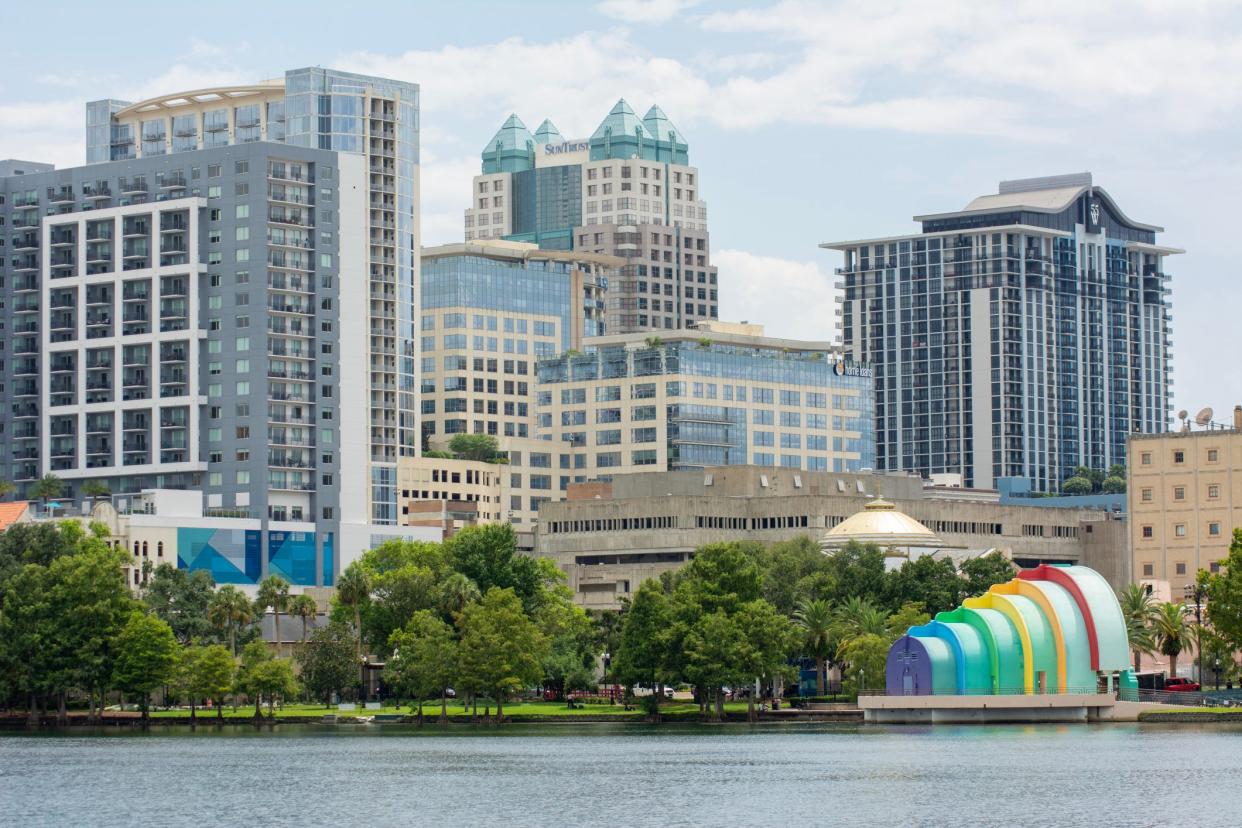Expect a record-breaking number of travelers on Fourth of July week: How to avoid traffic
If you’re one of the projected record-breaking 70.9 million travelers going on a Fourth of July trip, get ready to pack some patience.
“With summer vacations in full swing and the flexibility of remote work, more Americans are taking extended trips around Independence Day,” said Paula Twidale, senior vice president of AAA Travel, in a statement. “We anticipate this July 4 week will be the busiest ever with an additional 5.7 million people traveling compared to 2019.”
Whether you’re going by airplane or car, traveler numbers are hitting historic highs. An estimated 5.74 million people will fly to their Independence Day destination, a 7% increase from 2023. (We can thank domestic airfare being slightly cheaper this year for that.)
This year, 2.8 million more people will travel by car than last year, for a total of 60.6 million travelers. According to AAA partner and rental car company Hertz, cities like Dallas, Los Angeles, Denver and San Francisco are showing the highest rental car demand.
Here’s everything you need to know about Fourth of July travel.
Planning your summer trip? Where to go and how to save on summer vacations
What are the most popular destinations for Fourth of July week?

Many travelers are headed to the coast for their Independence Day trip, with states like Hawaii and Florida topping the list. With the best time for Alaskan cruises in full swing, cities like Seattle, Vancouver and Anchorage are popular among travelers. As expected, beloved European destinations like London and Rome earned spots on the list as well.
Most popular domestic destinations:
Seattle
Orlando, Florida
Anchorage, Alaska
Honolulu
Miami
Most popular international destinations:
Vancouver, British Columbia
London
Rome
Dublin
Paris
What are the best times to drive for Fourth of July week?
As is typical with holiday travel, the early bird will catch the worm, which means encountering the least traffic. Drivers should depart on their Independence Day road trips before noon on July 3 and 4. To return home, drivers should leave before 11 a.m. on July 7 and after 7 p.m. on July 8.
What are the worst times to drive for Fourth of July week?
“Drivers in large metro areas can expect the worst traffic delays on Wednesday, July 3, as they leave town, and Sunday, July 7, as they return,” Bob Pishue, transportation analyst at INRIX, said in a statement. “Road trips over the holiday week could take up to 67% longer than normal.”
On July 3 and 4, drivers should avoid being on the road between 2 p.m. and 7 p.m., when traffic will be most congested. On Friday, July 5, the worst traffic will be between 11 a.m. and 4 p.m.
On Saturday, July 5, the worst traffic for travelers returning home will be between 10:30 a.m. and 2:30 p.m. The worst traffic is expected July 7, so drivers should avoid the road between 2 p.m. and 8 p.m.
“Travelers should monitor 511 services, local news stations, and traffic apps for up-to-the-minute road conditions,” Pishue said.
Peak congestion times in major US cities
Atlanta
Worst route: Birmingham to Atlanta via I-20 E
Worst day: July 7
Worst time: 6:30 p.m.
Estimated travel time: 3 hours, 36 minutes
42% increased travel time
Boston
Worst route: Boston to Hyannis via Pilgrim Hwy S
Worst day: July 4
Worst time: 1:45 p.m.
Estimated travel time: 1 hour, 51 minutes
31% increased travel time
Denver
Worst route: Fort Collins to Denver via I-25 S
Worst day: July 8
Worst time: 2:45 p.m.
Estimated travel time: 1 hour, 37 minutes
56% increased travel time
Houston
Worst route: San Antonio to Houston via I-10 E
Worst day: July 6
Worst time: 1:30 p.m.
Estimated travel time: 3 hours, 48 minutes
41% increased travel time
Los Angeles
Worst route: Bakersfield to Los Angeles via I-5 S
Worst day: July 8
Worst time: 2:15 p.m.
Estimated travel time: 1 hour, 47 minutes
29% increased travel time
New York
Worst route: Jersey Shore to New York via Garden State Pkwy N
Worst day: July 7
Worst time: 2:15 p.m.
Estimated travel time: 1 hour, 25 minutes
40% increased travel time
San Francisco
Worst route: San Francisco to Monterey via Santa Cruz Hwy S
Worst day: July 2
Worst time: 5:45 p.m.
Estimated travel time: 2 hours, 31 minutes
19% increased travel time
Seattle
Worst route: Ellensburg to Seattle via I-90 E
Worst day: July 7
Worst time: 4:30 p.m.
Estimated travel time: 2 hours, 19 minutes
35% increased travel time
Washington, D.C.
Worst route: Baltimore to Washington via Balt/Wash Pkwy S
Worst day: July 8
Worst time: 3:15 p.m.
Estimated travel time: 1 hours, 1 minute
67% increased travel time
Kathleen Wong is a travel reporter for USA TODAY based in Hawaii. You can reach her at kwong@usatoday.com.
This article originally appeared on USA TODAY: Best and worst drive times for Fourth of July week travel